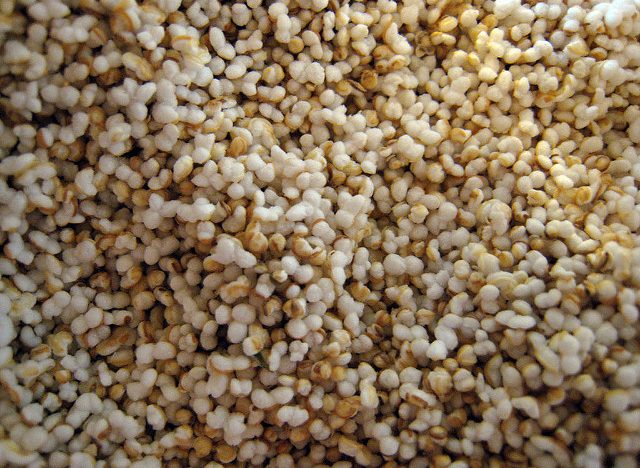Try some popped amaranth for a snack. Photograph by John Lambert Pearson/Flickr
A balanced diet to control weight and maintain a healthy lifestyle are essential to those prone to a stroke. It is advisable to supplement a wholesome diet with regular exercise since obesity increases the risk of a cerebral stroke. Besides genetics, high blood pressure, high cholesterol levels and diabetes are some of the conditions that lead to a stroke. Monitoring your calorie intake is key to keeping all sorts of lifestyle diseases at bay.
Begin slowly and cut back on foods that may increase your weight, blood pressure or cholesterol levels, step by step. It is impractical and more difficult to follow a nutrition plan, which has switched from a regular diet to a no-dairy, no-sugar and no-salt plan. Eating in moderation is the best possible manner to maintain a healthy diet.
Here are some of the nutrition guidelines that should be followed to lower the risk of a stroke.
Lower the intake of sodium and heavily salted foods so as to prevent hypertension. Cut out processed foods completely, besides store-bought pickles, papads and chips since they contain a high amount of salt.
Include a variety of whole grains such as amaranth, barley and buckwheat that add more fibre to the diet. Ancient grains are making a comeback in the best possible manner with restaurants too including the on their menu. If you’re eating out, look for a healthier option on the menu.
Fish and chicken instead of red meat, which are low in fat, should be part of the diet.
The diet should include a range of fresh fruits and vegetables.
Decrease the intake of foods that are high in sugar. Moderation is an important aspect of the diet when eating desserts and other sugary foods. Try and experiment with low or no sugar recipes.
Garlic lowers cholesterol levels and triglycerides, thereby lowering the risk of hypertension.










